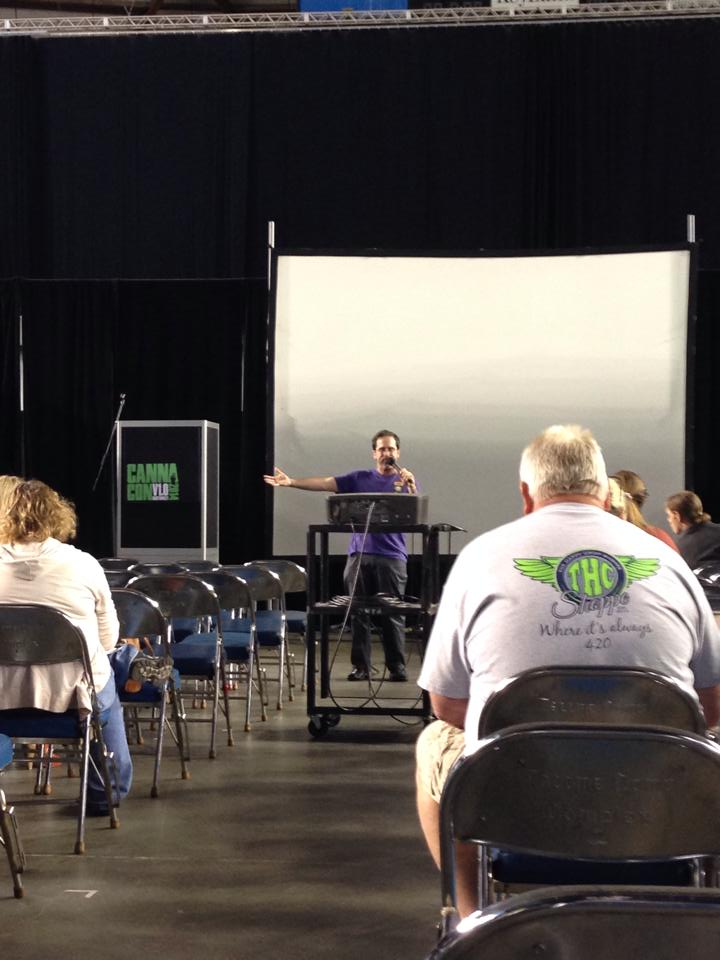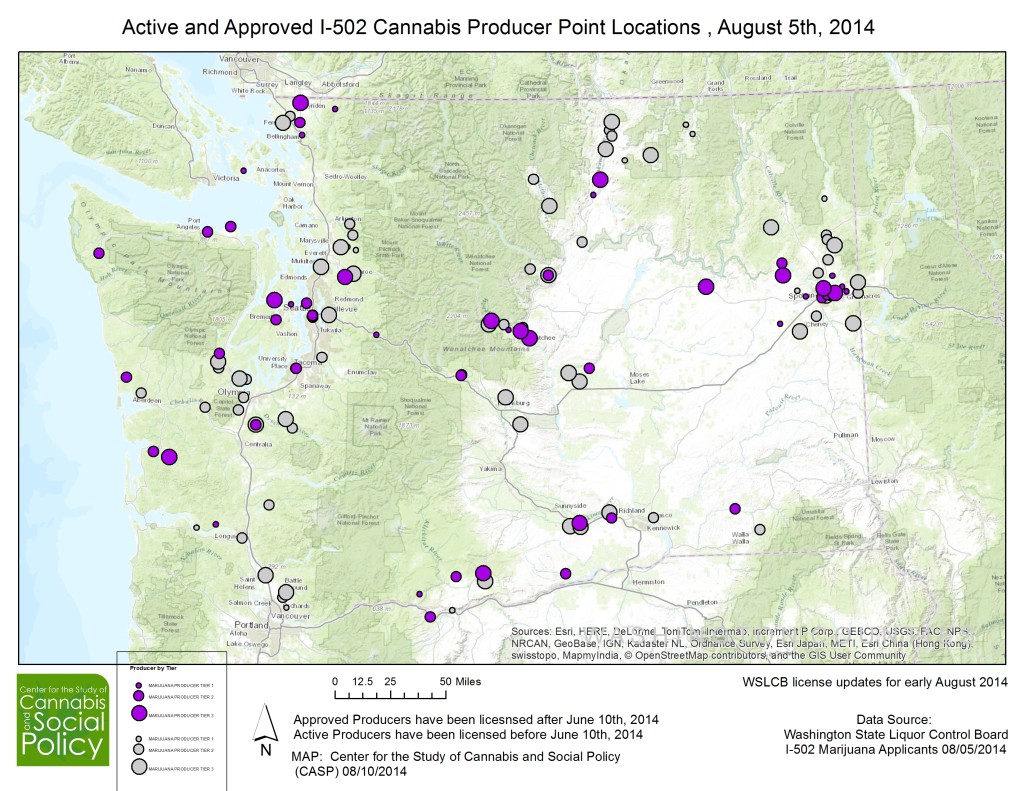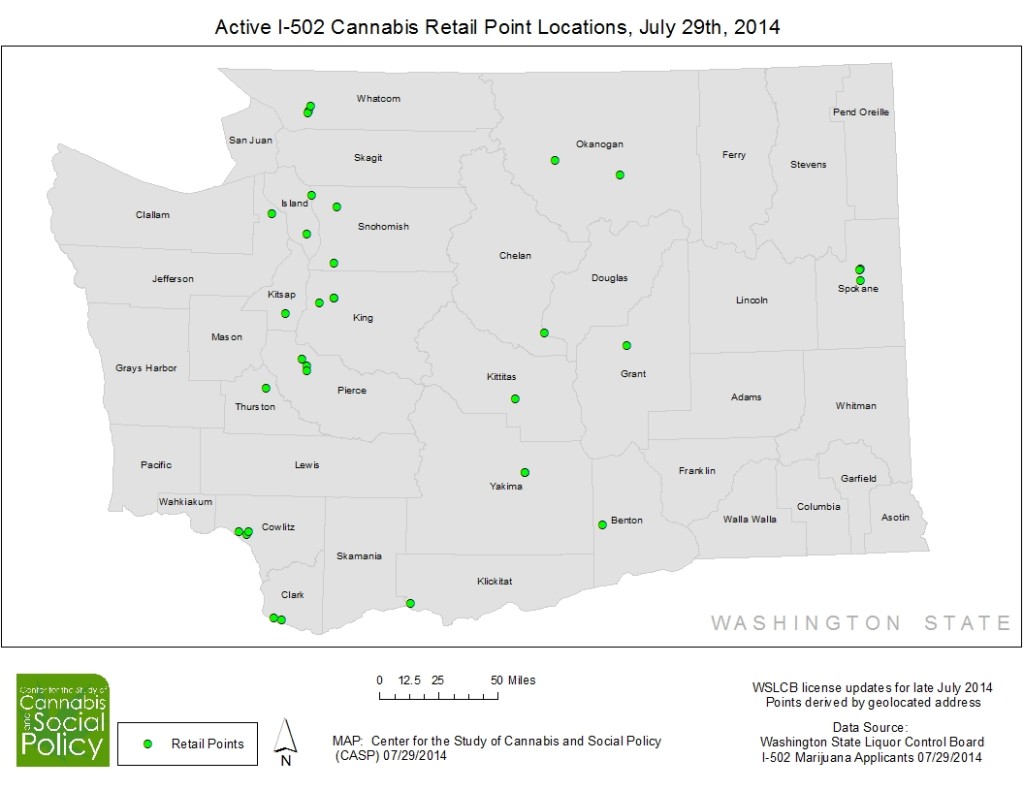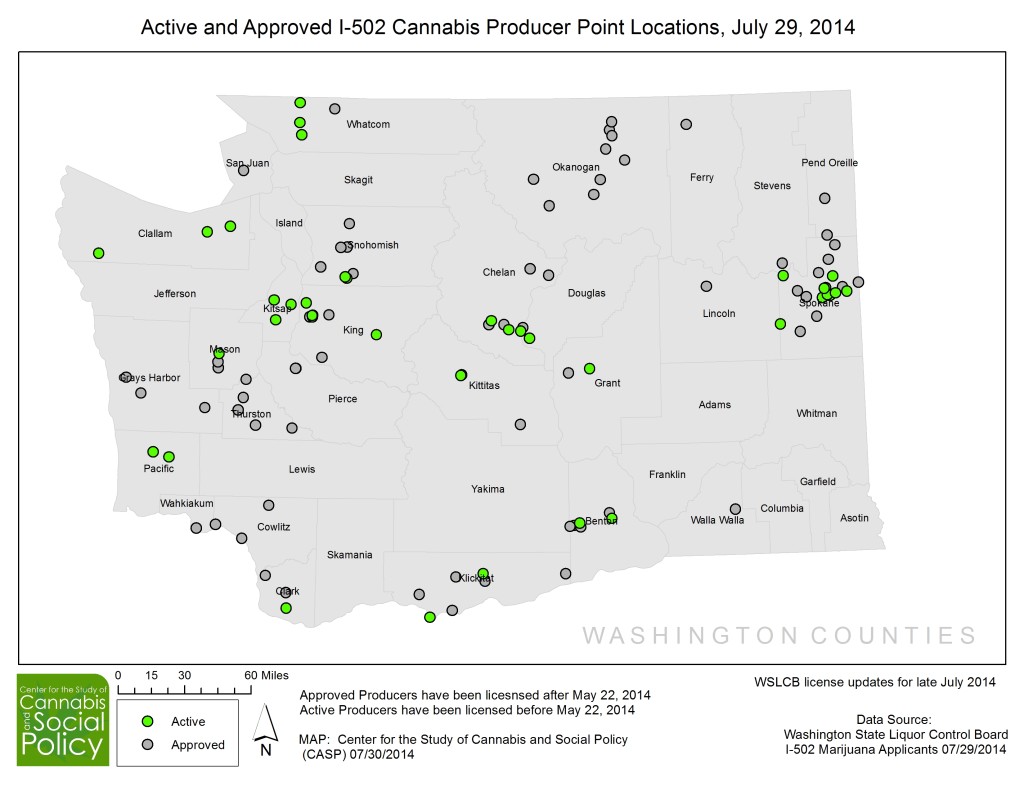photo by twicebaked in Washington
by Dominic Corva, Executive Director
I have to admit, my seminar talk at CannaCon the day before Hempfest began didn’t really excite me. I wasn’t sure who my audience was there, and after a bit of confusion around what exactly it was I planned on talking about (sourcing cannabis agriculture, not “managing your inventory”) I was not at all sure I belonged there. Strangely enough, it was the most engaged audience I’ve ever had outside of a classroom. Pam from twicebaked took this shot before the seats filled in, but I wish she could have snapped what happened at the end of the talk when a dozen people came up to tell me how useful it was for them. It turns out the audience was full of I-502 retailers, producers, and processors trying to figure out what’s going on.
So what did I say was going on? First, I laid out two important dates for significant supply increases. The first, November 2014, won’t matter as much as the second, November 2015. Both are the month after greenhouse and full sun production harvest, and although it’s elementary the indoor growing culture here isn’t quite as familiar with seasonality as the outdoor growing culture it will have to become. We at CASP are working on projecting the October harvest but in the meantime, it doesn’t take a genius to recognize that once a good chunk of Tier 3s get a whole season in, we will be in for a supply glut.
What this means for I-502 licensees, particularly producers, is that they need to make the most of the current windfall prices and plan for price declines in the near future, not a few years. This will impact indoor producers most of all, since their costs of production are much higher than those of non-indoor producers. Electricity is the big ticket item, but there’s also the cost of real estate leases, dealing with urban building codes, and so forth. I’m convinced that the current stabilization of black market prices in California after a 2009-2011 free fall is entirely the result of indoor production getting squeezed out.
The other thing I addressed was current retail pricing, popularly thought of as too high. Retail stores, I pointed out, were constantly running out of product and having to close. From a neoclassical economic perspective, that means one thing: prices are in fact too low, at $20-$25 a gram. Why might that be?
According to my ethnographic interviews, retailers are worried about not being perceived as price gougers, and they are using current illegal and medical prices as a comparison. This means that they aren’t just taking market prices from producers: they are seeking below-market prices right now, often trading long-term supply contracts to get them. And it’s working, to some degree — smaller producers certainly see the benefit of exchanging windfall prices now for sourcing stability later, presumably when market prices fall below the approximately $8/g or $3K per wholesale lb such arrangements generally fall into.
On the other hand, most producers have been in the process so long that they are absolutely starving for revenue, whereas the retailers simply won a lottery ticket. They need market prices to recapitalize their businesses and prepare for the future. Sure, some producer/processors seem especially rapacious, but from my interviews they, too, have been concerned about being perceived as price gougers. For them, however, $11/gram or $5K/lb seems much more fair — and probably is also below the true market price of legal cannabis right now.
Once I finished making these points, the audience stood up and made them again, to each other, and a conversation began. That’s where it’s got to go if the supply chain is to smooth out: retailers have to relax their definition of price gouging and producers have to provide product that retailers will have no problem paying a little more for. It was a true seminar moment for me, as someone who has led not a few of those in academic settings. By way of conclusion, I want to thank Mercedys McKnight for inviting me and Twicebaked in Washington for being a familiar friendly face in the audience, especially before the room filled up. That was a great experience for me!






